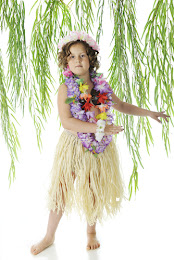As children, we played "Hawaiians," gathering together grasses and flowers and sitting amongst plants and bushes. Popular Halloween costumes were grass skirts and leis. The hula hoop--popular toy of my childhood-- was inspired by the hula dance. To me the Hawaiian islands represented paradise--warm weather, blue ocean, swaying palm trees, and scrumptious fruits, Alaska--not so much, too dark and cold. Perhaps, I would have imagined being an Eskimo if I had lived in a snowy place. As an adult, I traveled to Alaska where I found a spectacular land of mountains, forests, and quiet.
I recognize that Hawaii must have inherent difficulties given its colonial history and conflicts between the indigenous population and white transplants. Asians moved to Hawaii to work on the plantations, and there is a large U.S. military presence.
Hawaii was first populated by ancestors of Polynesians. The people lived in an isolated, untouched environment for centuries. They developed a close relationship to the land and the animals. Spiritual practices evolved from the attachment. Hawaii's ecosystems have changed dramatically over the centuries. Non native plants dominate the land now.
Before Cook's arrival in 1778, Hawaiians used their precious resources for building communities for the survival of their people. Plants of one kind were substituted for the native plants of the area when the community benefited, not dissimilar to the native Alaskans hunting whale for food and other resources. As people from foreign lands arrived, new plants and animals were introduced and flourished. Non native plants and animals account for half of plant species now as compared to when Cook arrived. Before 1778, a tiny percentage of plants were not native.
Peoples' attitudes towards nature have changed, including stewardship of the environment. One works for what one takes is the traditional view of a human's relationship with nature. The modern view differs; people are entitled to take what they want.
Ironically, the creation of the lei has lead to the decimation of certain plants. A lei represents love and respect and was used in religious ceremonies. What began as a beautiful tradition turned into greed and the desire to use leis for all types of contemporary celebrations. Currently, leis are made from non native plants. In earlier days, the leis for personal adornment, were constructed from commonly growing native plants which no longer are readily available. Conservationists educate the people about viewing Hawaii's native plants as "inexhaustible free resources;" in other words, one should not traipse in the woods and take what one desires. The advice can be applied to any locale.
Back to fires, indigenous populations, and over development of the land, subjects I have pondered in thepast. The usual blame game has commenced in Maui, with the people blaming the government, the government assigning the problem to further study, and everyone pointing fingers at the utility company. Governor Josh Green blamed climate change, essentially trubut still a "cop-out" for responsibility.
We witnessed the identical dynamic in Paradise, California in 2018. When I was in Northern California (Sonoma County) last September, I saw scorched hillsides and burnt acorns, twigs, and bark on giant oak trees. The locals seemed humdrum about the situation. Paradise (not in Sonoma County) has rebuilt itself by following new safety standards. Resource guides have been printed to help residents with fire prevention. PG&E, the utility company, was found liable for the fires in Paradise and has paid out millions to rebuild.
The elderly, infirm, disabled, and poor suffer the most from disasters, a frequently documented fact. Support has been implemented in California to assist home-bound and less informed people to install emergency text messages, answer the phone, and be generally aware of one's surroundings.
Indigenous peoples suffer more from changes in the natural environment due to their cultures and lifestyle. Simply put, they live closer to the earth, spiritually and physically. Tragically, indigenous groups were forced from their original lands and shunted to less hospitable places. Lahaina is important to native Hawaiians, so they grieve deeply.
Next to impossible for me--an outsider--to determine the actual ethnic/racial proportions that exist in Lahaina which would support or dispel if indigenous people suffered more losses. Charts prepared by government agencies are confusing and deceptive at best when a population consists of mixed racial groups. From pictures, it appears that a disproportionate number of older, mixed race adults perished.
Evidently, hubris and misjudgement were human factors compounded by extreme wind and drought which resulted in needless tragedy, simply difficult to understand given that this fire was not the first in the Hawaiian islands and was predicted by scientists.
https://dlnr.hawaii.gov/dofaw/files/2014/02/Hawaiian-Ecosystems-and-Culture-Growing-Lei-plants-1.pdf
https://calmatters.org/events/2020/10/rebuilding-and-resiliency-how-we-need-to-handle-wildfires-from-now-on/
https://climate-xchange.org/2020/05/08/disproportionately-impacted-by-the-climate-crisis-indigenous-nations-lead-on-lasting-solutions/?gclid=Cj0KCQjwrfymBhCTARIsADXTabmEDqAb1jPoi7e399VVvit3bgwidGwphlynsxGyRIV1IAO8RCZeBLIaAsFeEALw_wcB
©Karen Levi 2023



No comments:
Post a Comment